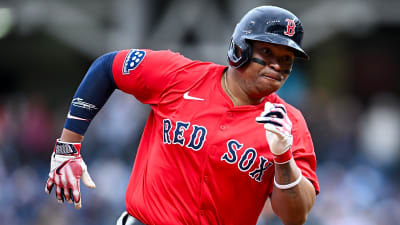
Now that the Leafs have been eliminated, there will be much to reevaluate. Of course, decisions on Mitch Marner and Brendan Shanahan will be front and centre, but in truth, few areas will be exempt from contemplation. There will be ample rumours from all directions, as the course of the franchise is expected to shift dramatically.
Much of the efforts to improve the team, whether by addition or subtraction, will be focused on the future. However, it might be enlightening to contemplate the recent past to help chart the course ahead. Let’s take a look at whether the Leafs regret the aggressive approach to this season’s trade deadline.
Mitigations
Part of this exercise will be trying to be fair to the past now that the Leafs’ playoff fate has been decided. A reductionist view might be harsh in saying that, without much playoff success over the past decade, virtually all deadline shopping was in vain, if not misguided altogether. There might be some validity to this viewpoint, but it is not exactly fair.
Another aspect to consider is that the players the Leafs added at the deadline, Brandon Carlo and Scott Laughton, are under contract for next season. Both players come at very affordable cap hits, which will give the Leafs flexibility in constructing next season’s roster. Regardless of how impactful they are, both players reinforce key positions and traits that the Leafs value under GM Brad Treliving and coach Craig Berube.
For his part, Carlo is an extremely valuable player to have in the fold. Not only is Carlo the youngest of the Leafs’ top five defencemen, but his handedness is vital to his value. A look around the league shows that many teams lack exactly the type of player Carlo is, a defensive right-shot who can anchor a penalty kill and handle top-four minutes at even strength. The Leafs themselves lacked any such players for most of the past decade, before Chris Tanev was acquired. Carlo helps give some insurance to the blueline.
Laughton is not quite as impactful or valuable, and his work with the Leafs has left more to be desired. Still, Laughton is a centre who brings an edge and can contribute on the penalty kill. Perhaps Laughton will be able to unlock more as a Leaf next season.
Picks
The next part of reevaluating the Leafs’ deadline is what they shipped out. The Leafs’ 2025 first-round pick was traded for Jake McCabe, so the Leafs had to look to the future to provide value for other teams. The Leafs traded their 2026 first-round pick to the Boston Bruins and their 2027 first-round pick to the Philadelphia Flyers.
The picks themselves are one thing, but the Leafs gave up a good deal more of the context of their manoeuvres, which is considered. Any hopes that the team might rebuild will be put off until the 2027–28 season, something that the more frustrated Leaf fans might have otherwise considered. The Leafs will be without key trade assets until that time as well, their ammunition for future deadlines drastically reduced. This will also rob the Leafs of opportunities to poach RFA talent with offer sheets, an avenue that might become increasingly popular league-wide.
The lack of draft picks does not completely eliminate the Leafs chances of upgrading, but it will be a hurdle for the next couple seasons. The Leafs can still trade for picks or sign prospects, but the team will be hard pressed to acquire elite young talent.
Players
The Leafs also dealt some of their more important prospects at the deadline. Fraser Minten was sent to the Bruins, while Nikita Grebenkin was sent to the Flyers. Not to be forgotten, fringe roster players Conor Timmins and Connor Dewar were sent to the Pittsburgh Penguins. Dewar and Timmins were clearly not valued as much by Treliving, though they are low-cost NHLers in their mid-twenties.
By far, the biggest loss is Minten, a big two-way centre who could be an inside scorer. Minten could be a better player than Laughton as soon as next season, exactly the type of middle-six centre that the Leafs need to improve their lineup. Of course, Minten was part of the Carlo trade, not the Laughton trade, but the comparison is still worth considering.
Grebenkin, meanwhile, is a young power winger. He appears to be on the doorstep of being a regular NHLer next season. There is a case that both Minten and Grebenkin would have played regularly for the Leafs next season, though Minten is the bigger loss. Both would seem to fit well for Berube’s system, too. Of course, if Minten is able to blossom as a key player for the Bruins, it would haunt the Leafs.
Recouping
Over the years, the Leafs have been creative in subsidizing their prospect pool, and clearly, Treliving has tried to keep this trend. The Leafs signed centre prospect Luke Haymes out of the NCAA, who shares many similarities with Minten. Haymes is good on both sides of the puck and was effective at winning battles at both net fronts. While not quite as heralded as Minten, the Haymes signing shows that the Leafs will continue to find ways to add interesting young talent.
The Leafs seemed to have done quite well with their late-round picks last draft, a trend that will also need to continue. The chances of hitting on multiple late-round picks are slim, but the Leafs will have to unearth some gems if they wish to keep their prospect system strong.
Big picture
The Leafs have made it to the second round twice in the Auston Matthews era. In both cases, the Leafs had to dig deep at the trade deadline, dealing away multiple years’ worth of first-round picks. The last time the Leafs were so aggressive was at the 2023 deadline when they acquired both Jake McCabe and Ryan O’Reilly. Clearly, the looming UFA statuses of Mitch Marner and John Tavares play a big role in swinging for the fences this season.
The aggressive trades worked to some extent, as the Leafs made a deeper run in both those seasons. In 2023, a big reason the Leafs might have felt shortchanged was that O’Reilly did not re-sign with the team. With Laughton and Carlo still under contract, the Leafs will not have to worry about that exact scenario this time around.
From a larger perspective, it is an indictment of the Leafs’ core that they could only win playoff rounds while mortgaging multiple years of their future. With the benefit of hindsight, one might suggest that all the deadline buying over the past decade was regrettable. The Leafs would have been better served building up a base of young talent underneath the core, or even waiting until the team showed more in the playoffs before delving so deep into their futures. Perhaps this is an unreasonable standard, though. Through the seasons, there were rarely calls for more restraint from the public, the pressure to maximize the moment leading to consensus.
Within the context of this season, such an aggressive approach might serve as justification for how to approach this offseason, one way or another. With each passing season, the number of calls to break up the core has grown, but the Leafs have remained unwavering in their efforts to keep them together. As much as the formula has consistently fallen flat in the playoffs, the Leafs have enjoyed their most successful stretches of regular season success under President Shanahan’s core tenets.
Extensions
Going all in this season gave the team a chance to show its true colours. Regardless, the team’s salary structure was due to shift dramatically with the expiring contracts. Perhaps the spending spree has helped give some certainty on how to best chart the path forward. As much as the Leafs’ specific history paints a clear picture, a look around the league might contradict that picture.
With the same four teams remaining as last year, the upper echelon has been an exclusive club. The Leafs are not alone in feeling stagnant, as several other teams failed in their push for the third round. Many teams struggle to find the right path, and all but one ultimately fail. The Mikko Rantanen saga seems relevant to the discussion around star players, how much to pay them, and how they fit onto a team.
The Leafs should be able to recognize that it is time for a change. What is less clear is what that path is. Would things be fundamentally different if the current Leafs took huge hometown discounts? Would they be able to afford more help? The Washington Capitals had great success in turning over their roster aggressively.
Perhaps the issue lies within the core’s play style, collective disposition, or personalities. Perhaps the issue is more circumstantial than inherent. Timing could be an issue. Finally, with the team filled to the brim once more, the time has come to an end. The Leafs are a veteran team that will see no benefit in losing records and is thus locked into living in the present.
More must-reads:
- Maple Leafs make decision on team president Brendan Shanahan
- Explosive third period helps Stars rally over Oilers in Game 1
- The 'Active home run leaders in Major League Baseball' quiz
Breaking News
Trending News
Customize Your Newsletter
 +
+
Get the latest news and rumors, customized to your favorite sports and teams. Emailed daily. Always free!








